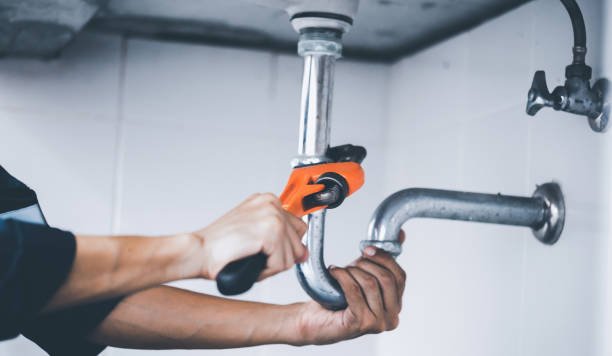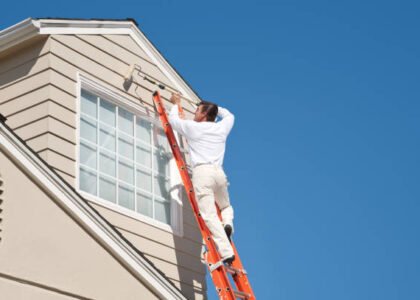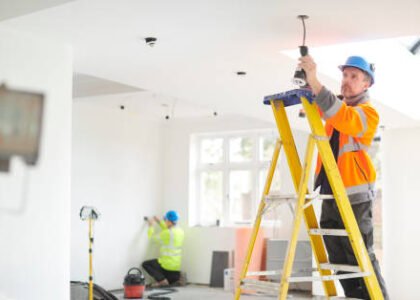Plumbing is one of those things most homeowners don’t think about—until it’s too late. One moment, everything seems fine. The next, you’re dealing with a burst pipe, a flooded bathroom, or an unexpected repair bill. Many of these issues stem from simple, avoidable mistakes that can quietly destroy your home’s plumbing system over time.
The good news? With a bit of awareness and proactive care, you can avoid the most common pitfalls that lead to plumbing disasters. Let’s take a closer look at the most frequent errors homeowners make—and how to prevent them.
1. Using Drains as Trash Cans
One of the most damaging habits is treating drains like garbage disposals. Whether it’s grease from cooking, coffee grounds, or even small food scraps, sending the wrong things down the drain leads to blockages and long-term damage.
Grease, in particular, may seem harmless when hot and liquid, but it quickly solidifies in your pipes, forming sticky clogs that trap other debris. Over time, this can cause serious backups or even sewer line issues.
Solution:
Always dispose of cooking oils, fats, and food waste in the trash. Use sink strainers to catch debris and regularly clean them out. This small habit shift goes a long way toward protecting your plumbing.
2. Ignoring Routine Plumbing Checks
Just like your car needs regular oil changes, your home needs routine plumbing maintenance. Small leaks, slow drains, or fluctuating water pressure might not seem like emergencies, but they’re often signs of bigger problems lurking beneath the surface.
Unchecked leaks can lead to mold growth, structural damage, and skyrocketing water bills. Regular inspections can catch these problems early—before they evolve into costly repairs.
Solution:
Schedule a plumbing check-up at least once a year. Inspect under sinks, around appliances, and outside spigots for signs of moisture or corrosion. Even better, have a licensed plumber perform a full system inspection to ensure everything is in working order.
3. Flushing the Wrong Things
Toilets are designed to handle only human waste and toilet paper. Yet many people flush things like wipes (even “flushable” ones), feminine hygiene products, dental floss, cotton balls, and even paper towels. These materials don’t break down the way toilet paper does, and they can get stuck in pipes or in your septic system.
Flushing the wrong items is one of the leading causes of pipe blockages and sewage backups.
Solution:
Keep a waste bin in the bathroom for non-flushable items. Teach kids and guests what should and shouldn’t go in the toilet. It might feel like a small issue, but the wrong flush can lead to major pipe damage.
4. Overusing Chemical Drain Cleaners
When a drain slows down or clogs, it’s tempting to reach for a bottle of liquid drain cleaner. While these products can provide a temporary fix, they often do more harm than good.
Chemical drain cleaners use harsh ingredients that generate heat to dissolve clogs. This heat can weaken or damage your pipes—especially older ones made from metal or PVC. Over time, repeated use may cause pipes to crack or corrode from the inside out.
Solution:
Use mechanical methods like a plunger or drain snake first. If that doesn’t work, call a professional to diagnose the root cause. For preventative care, flush drains with baking soda and vinegar monthly, followed by hot water.
5. Skipping Electrical System Reviews in Wet Areas
At first glance, electrical systems might seem unrelated to your plumbing. However, they often operate in close quarters—especially in areas like bathrooms, kitchens, and laundry rooms. Faulty wiring or overloaded circuits in these spaces can spark fires or short out near water lines, causing serious safety hazards.
Ensuring proper electrical maintenance in water-prone areas is critical to keeping both your plumbing and home safe.
Solution:
Have a qualified electrician inspect outlets, circuit breakers, and wiring near plumbing lines at least once every few years. Make sure all outlets near sinks or tubs are GFCI (ground fault circuit interrupter) protected to prevent shocks or electrical damage.
6. Not Insulating Pipes in Cold Weather
Frozen pipes are a nightmare for homeowners in colder climates. Water expands when it freezes, which can cause pipes to crack or burst, leading to major water damage once things thaw out.
This is a particularly common problem in basements, crawlspaces, or areas of the home without sufficient insulation.
Solution:
Before winter hits, wrap vulnerable pipes with foam insulation sleeves or heat tape. Keep cabinet doors under sinks open during extreme cold to allow warm air to circulate. Let faucets drip slightly on freezing nights to keep water moving.
7. DIY Repairs Without the Right Knowledge
A confident homeowner may be tempted to tackle minor plumbing problems on their own. But over-tightening fittings, using the wrong sealants, or applying too much pressure can make things worse.
A small fix can turn into a big leak if it’s not done correctly.
Solution:
If you’re unsure, consult a professional. There’s no shame in asking for help—and it’s often more affordable in the long run than cleaning up after a failed DIY.
Final Thoughts:
Your plumbing system is one of the most vital parts of your home—and one of the easiest to overlook. By avoiding these common mistakes and scheduling regular checkups, you can prevent a small issue from turning into a plumbing emergency.
Think of your home as a living system. Every part—plumbing, electrical, structural—works together to create a safe, efficient environment. With routine care and the right preventative habits, you can protect your pipes, your wallet, and your peace of mind.






